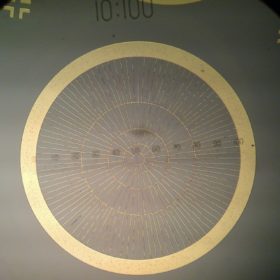
Researchers in Spain have analyzed the most important technologies for the development of intermediate-band solar cells (IBSC), a solar PV technology that was conceived to exceed the Shockley–Queisser limit. They identified four established technologies that are currently being adopted to manufacture IB materials and IBSC prototypes. Their future goal is to find the appropriate material to fabricate cheap and very efficient IBSCs.
Scientists at the Institute of Solar Energy of Spain's Universidad Politécnica de Madrid (IES-UPM) have investigated the potential of intermediate-band solar cells (IBSC), a solar PV technology that was conceived to exceed the Shockley–Queisser limit – the maximum theoretical efficiency that a solar cell using a single p-n junction can possibly reach, calculated by examining the amount of electrical energy that is extracted per incident photon.
“In the past two decades, dozens of groups worldwide have been developing experimental IBSC devices employing different materials from within the four technological approaches that we describe in the article,” research co-author, Iñigo Ramiro, told pv magazine. “Our university has been developing actual IBSC prototypes for the past 15 years,” research co-author Antonio Marti added. “Whereas up to now our goal was the demonstration of the underlying physics, now it is to find the appropriate material to fabricate cheap and very efficient IBSCs.”
According to their findings, presented in the study Intermediate band solar cells: Present and future, published in Progress in Photovoltaics, the research into this type of cell has reached a mature stage, the technology is still in its infancy in terms of practical implementation. “We feel that, driven by the number of explored materials and technologies so far, there is some confusion about what route the IBSC research should take to transition from the proof of concept to high efficiency,” the group explained.
Stepping stone
These cells, conceived to provide a large photogenerated current while maintaining a high output voltage, rely on an intermediate band, between the conduction and valence band, which increases the device's induced photocurrent and, consequently, its efficiency. In these cells, photons with not enough energy to pump electrons from the valence band to the conduction band can use this intermediate band as a stepping stone to generate extra electron-hole pairs.
According to the authors, IBSCs in an ideal configuration can provide efficiencies of up 63% under maximum light concentration. “Actually, the limiting efficiency of an IBSC is very close to that of a tandem cell with three gaps,” the scientists explained, adding that even under one-sun illumination its efficiency can still exceed that of single-gap solar cells by around 50%.
Four approaches
The academics identified four established technologies that are currently being adopted to manufacture IB materials and IBSC prototypes. These include quantum dots (QDs), bulk with deep-level impurities (DLIs), highly mismatched alloys (HMAs), and organic molecules (OMs).
The study also lists the most important experimental milestones related to the IBSC technology achieved over the past two decades. “This process of two-photon photocurrent (TPPC) was first demonstrated in 2006 using InAs/GaA (indium/gallium arsenide) epitaxial quantum dots (EQDs) operating at low temperature,” the group stated. “The first demonstration of voltage preservation was reported in InAs/GaAs EQD prototypes operating at low temperature in 2010.” Another milestone was the demonstration of two-photon photovoltage in GaSb/GaAs EQD prototypes at low temperatures.
The researchers noted that two main experimental milestones are still to be achieved. “The first one is the simultaneous demonstration of photocurrent response to below-bandgap photons and voltage preservation,” they affirmed. “In this respect, so far, below-bandgap absorption has been reported under short-circuit conditions (V= 0), and voltage preservation has been reported at open circuit (J= 0).”
Despite the increasing volume of research on this cell technology, IBSC devices built to date have not fully exploited the benefits of the intermediate-band and it is still difficult to fathom which technologies will prevail in the future.
According to the scientists, however, colloidal quantum dots (CQDs), which are still largely unexplored, have the potential to overcome the main limitations found in epitaxial quantum dots (EQDs). “Each technology has its strengths and weaknesses, but overall, QDs is the one that has verified most of the phenomena expected in IBSC operation,” the authors state in the paper. “CQD is a potentially low-cost technology, which allows envisaging the use of IBSCs in flat-plate PV.”
“We think that, as soon a high-efficiency IBSC is developed, the scientific community will devote increased efforts in optimizing the performance of these devices,” the two researchers told pv magazine. “We are convinced that the industry will show great interest once the IBSCs are proven to be very efficient and potentially cost-effective, depending on the niche market.”
Lắp đặt điện mặt trời Khải Minh Tech
https://ift.tt/2X7bF6x
0906633505
info.khaiminhtech@gmail.com
80/39 Trần Quang Diệu, Phường 14, Quận 3
Lắp đặt điện mặt trời Khải Minh Tech
https://ift.tt/2ZH4TRU
Không có nhận xét nào:
Đăng nhận xét